Audio Challenge of the Year: The Intense Live Sound Logistics Behind the 2018 GRAMMY Awards
This year on Sunday January 28th, the GRAMMY Awards celebrated their 60th anniversary with a return to New York City and the most famous arena in the world, Madison Square Garden, for the first time since 2003. Highlighted with performances by U2, Sting, Lady Gaga, Childish Gambino, Bruno Mars, Sam Smith, Gary Clark Jr. and a moving tribute to the late Tom Petty, The 2018 GRAMMY Awards were a high-definition, surround sound multimedia broadcast production unlike any other.
The technical demands of broadcasting the GRAMMYs are an enormous challenge that involves hundreds of people working together. I traveled to Madison Square Garden the week of the GRAMMYs for a backstage tour inside and outside the arena to see the scope of this massive production.
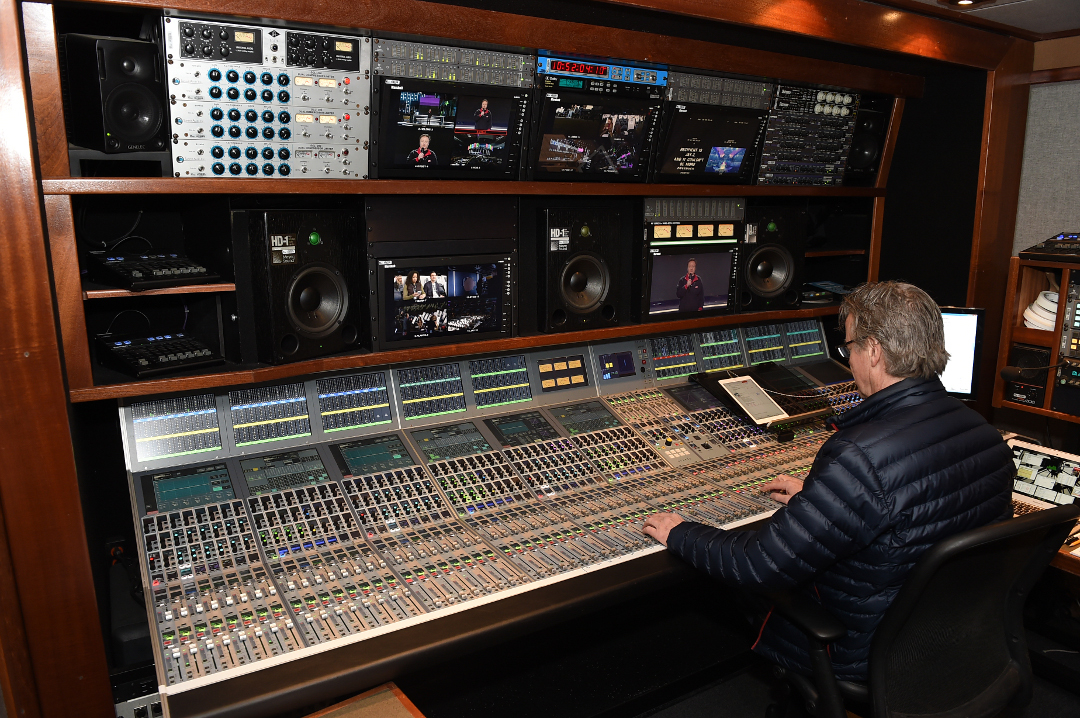
Pull up to one of the broadcast trucks onsite for the 60th Annual GRAMMY Awards at Madison Square Garden in New York City. (Photo credit: Kevin Winter, Getty Images).
Front of House
Naturally, The GRAMMYs are all about audio. Firehouse Productions, with System Designer Mark Dittmar were tasked with designing the PA and the myriad of “worlds” for monitors, amps, wireless mics, communications and splitters.
The house PA at MSG for the GRAMMYs is built around an 800,000 watt JBL VTX line array. Michael Abbott is the audio coordinator for The GRAMMYAwards. “We still use JBL products,” he said. “We use VT25 and A12 speakers along with newest subs.”
“Audio is broken up by who is listening to it,” points out Mark Dittmar. “You’ve got the home audience who are listening on TV, musicians listening on stage and the audience here at Madison Square Garden is listening in the house.”
Starting at Front of House (FOH), audio is split into two different mixing consoles with FOH Production Mixer Mikael Stewart and FOH Music Mixer Ron Reaves dividing the mixing duties for the house between program content and music performances. Stewart, working on the Yamaha Rivage PM10, controls the mix of all program content including podium mics, handheld mics and video playback. Ron Reaves mixes all the musical performance for FOH on the Digico SD7 console.
“This is my sixteenth year mixing the GRAMMYs and I’m kind of the new guy here,” Ron joked. Many of the crew members working the production have been working on The GRAMMYs show for 20+ years. Ron told me, “We’re so specialized on this show, I don’t really get involved with the design of the PA system. Mark (Dittmar) is sixth months ahead of me on that coordinating with an army of people from different departments who have to sign off. I just show up and run it like a race-car driver and take all the credit.”
“Ron has the ability to land 224 mics per scene,” Mark Dittmar added. “Not 224 mics [total] for the show, but every single act can have up to 224 inputs.” It’s all about speed he told me for setting up each act. “Some acts have eight mics, some have 120 and we don’t necessarily have more time to set up the 120 mics than we do eight.”
Backstage at The Madison Club
For the GRAMMYs, The Madison Club at MSG becomes the home for all things audio behind the stage seven stories above ground level. The space is long and narrow at 140 feet wide and only 20 feet deep. Check out MSG’s website for a detailed 360 degree view of The Madison Club to get a sense of the space when it’s not filled with audio gear.
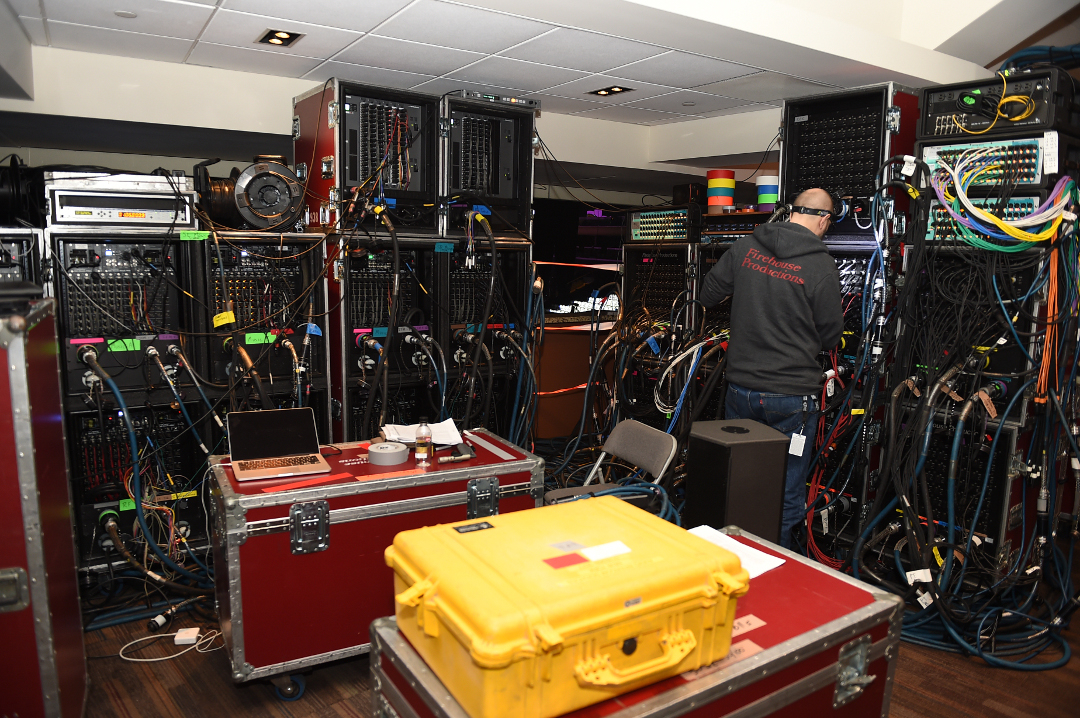
The luxurious amenities of Split World in the Madison Club at MSG… (Photo Credit: Kevin Winter, Getty Images)
All the audio lines for the show come up to The Madison Club and split out to thirteen different mixing desks including FOH, Monitors and the broadcast trucks outside. The audio pros up here are in charge of 224 channels of audio, 56 wireless mics, 112 wired mics plus playback feeds.
Because The GRAMMYs is a live show, every moment is crucial. As such, the stage is set up into two different musical performance stages on the left and right, each coupled with their own independent monitor mixing consoles as well as three additional monitor desks that are brought in special at the request of three different artists.
Some of the “worlds” in the Madison Club area include “Split World” where all the mic signals get split analog and converted to fiber optics that transmit the hundreds of audio lines to FOH, Monitors and the broadcast trucks. “Wireless World” where all the wireless mic signals terminate, as well as “Comm World” for all hard-wired intercom and communications.
“The audio crew is a little bigger here than in L.A. because we’re challenged here on multiple elevations,” Audio Coordinator Michael Abbott told me. “We’re on the ground floor downstairs, we’re five stories up where the show takes place on stage, and we’re seven stories up where mixers and coms are. Different elevations mean more people to deploy personnel and equipment.
“We’ve got 192 inputs of audio signals plus 24 channels of audience mics,” Abbott continued. “We’re also recording ambience this year for the the Dolby Atmos application so that we can do a mix of the Dolby hopefully this year, and try to recreate an Atmos sound field to try and further that technology.”
Trucks
M3 (Music Mix Mobile) provided two identical trucks this year to handle just the musical performance mixing duties in 5.1 surround for The GRAMMYs. Two trucks allows for the show to be broken up, most likely between the stage left and stage right acts, giving each mixer a more relaxed and less intense schedule for the 3.5 hour show.
The musical performances are then fed to a third truck that handles the final broadcast audio mix for CBS.
Location & Logistics
Moving the GRAMMYs from L.A. back to New York was a massive logistical challenge. Madison Square Garden is simply a smaller arena with effectively zero space outside of the venue available for parking and gear storage, a luxury in sprawling Los Angeles where parking lots surround The Staples Center. This makes for a unique challenge with a show the size of The GRAMMYs.
“It’s really difficult on us doing a show of this magnitude in a significantly smaller space,” Michael Abbott told me. “We came out here in April and started surveys, and we found we were gonna be challenged by these logistics. There’s much less space backstage. The room itself is significantly different from The Staples Center, it’s effectively one-third smaller which was really a revelation. It doesn’t allow for the same grandiose, big production screens and set pieces.”
FOH Music Mixer Ron Reaves agrees. “It’s a tougher load-in in New York City,” he said. “Much more cramped getting things in here, not great access. You’ve got one ramp to push everything up. Whereas at Staples you can back up and unload several trucks.”
Load-in began at Madison Square Garden at 12:01 AM on Sunday the 21st, one week before show day loading in what would eventually be 50 to 70 semi trucks worth of gear — 24 hours a day. “The show this year is a much faster pace than in past years” said Mark Dittmar. “At MSG we have several days less to load in than in LA, but in two days we went from the first audio truck to show ready. On load out, we’ll be five semi trucks out the door in eight hours for audio. 50-70 semi trucks for the whole show. It’ll take approximately 48 hours for the whole show to load out.”
Wrapping Up
Of course, all of this is in service of a production which CBS will broadcast to 26 million+ people around the world. It will come as no surprise that many artists and their respective record labels will enjoy a “GRAMMY Bump” in streams and album sales following the awards show.
Having watched the event last night at home, I will say that overall I was impressed with the technical aspects of the live broadcast. The vast majority of the musical performances sounded absolutely fantastic. Save a few minor glitches, the broadcast as a whole was executed masterfully.
It was a short honeymoon in New York City however. Starting next year, the GRAMMYs will return to Los Angeles for 2019 through at least 2022.
— Zach McNees
Please note: When you buy products through links on this page, we may earn an affiliate commission.







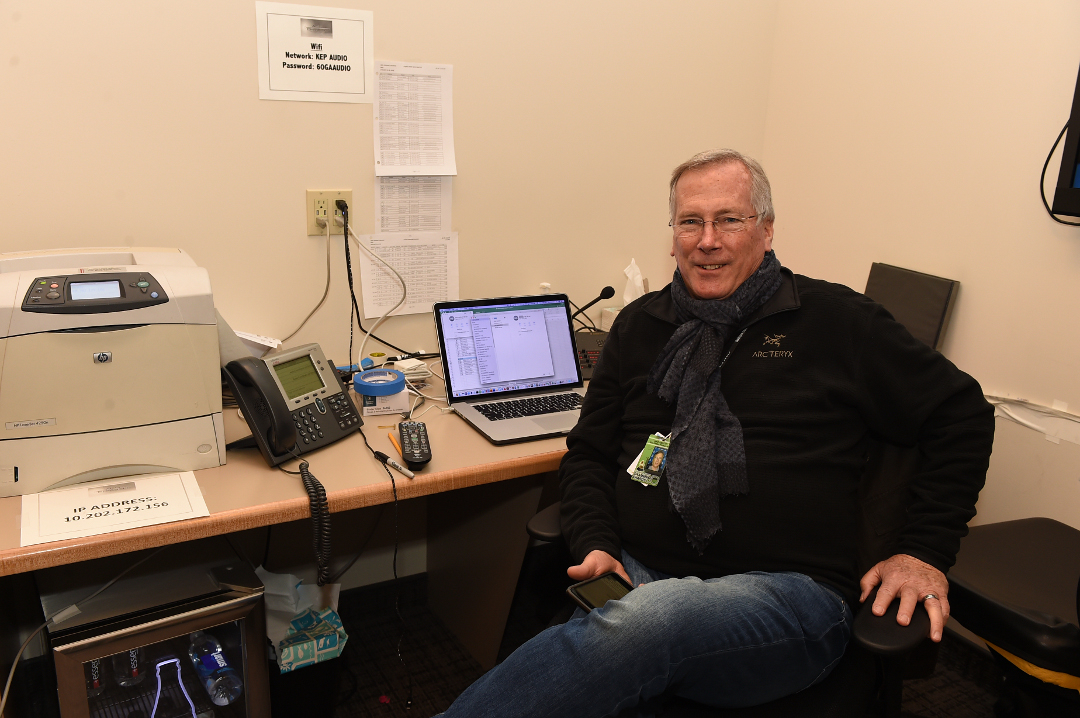
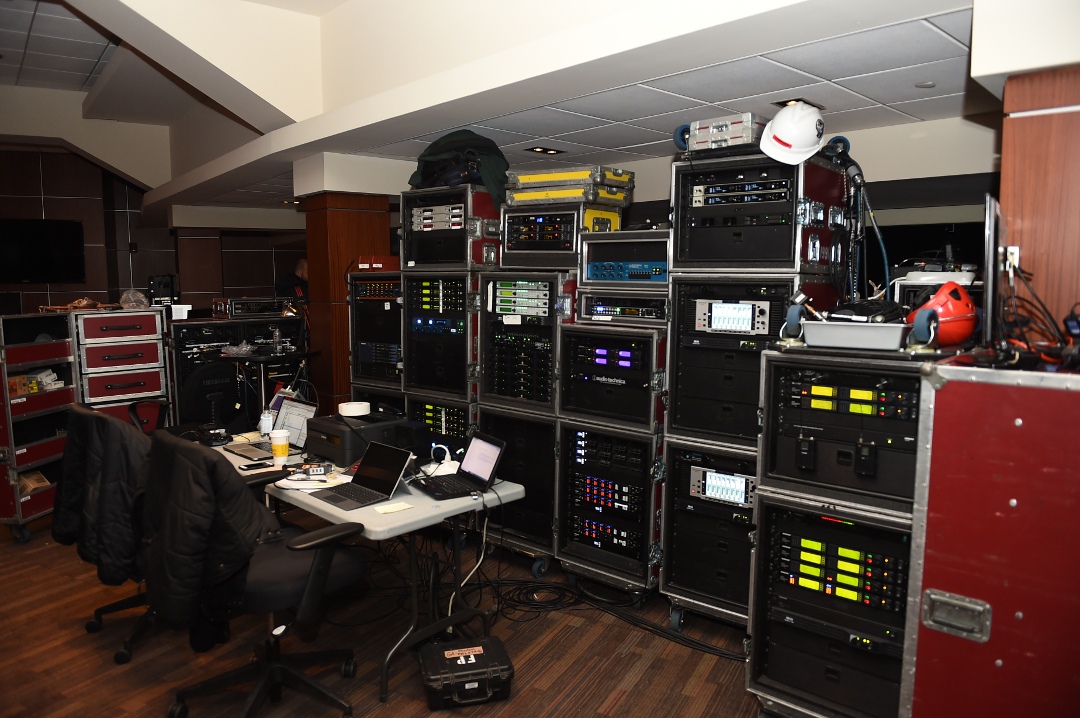

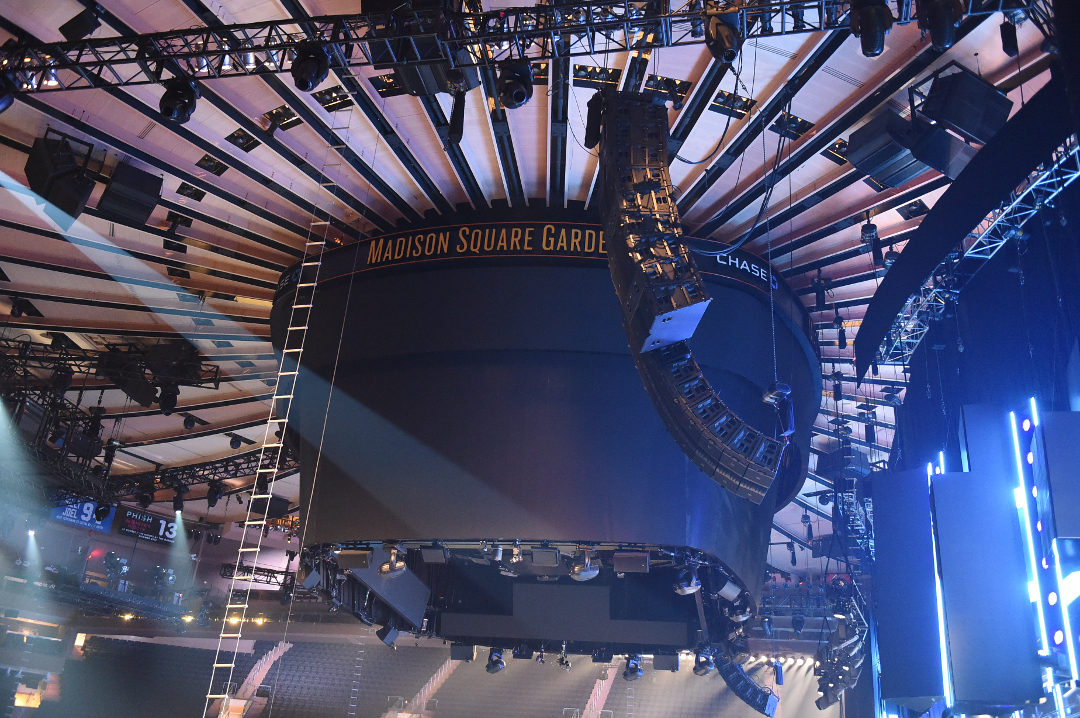
Shane McGill
January 29, 2018 at 10:50 pm (7 years ago)I hoped to hear something about the playback system – obviously not all performances are ‘live’…